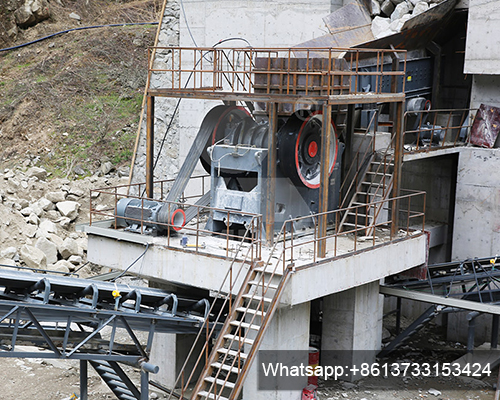Basalt Crushing Aggregate Production Line Technical Process
Basalt is a common igneous rock that is often used as an aggregate in construction materials. Basalt crushing aggregate production lines are used to process basalt rocks into different sizes of aggregates that can be used in a variety of applications, such as road construction, concrete production, and railroad ballast.

The basalt crushing aggregate production line technical process typically consists of the following stages:
1. Feeding
The first stage in the basalt crushing aggregate production line is feeding. Basalt rocks are typically transported to the production line by truck or conveyor belt and are then fed into a hopper. The hopper feeds the rocks into a vibrating feeder, which ensures that the rocks are fed into the crusher at a uniform rate.
2. Coarse Crushing
The second stage in the basalt crushing aggregate production line is coarse crushing. The vibrating feeder discharges the rocks into a jaw crusher, which is used to break the rocks into smaller pieces. The jaw crusher has two large jaws that open and close, crushing the rocks between them. The size of the crushed rocks is determined by the gap between the jaws.
3. Secondary Crushing
The third stage in the basalt crushing aggregate production line is secondary crushing. The coarsely crushed rocks from the jaw crusher are then transported to a cone crusher or impact crusher for further crushing. Cone crushers use a rotating cone to crush the rocks, while impact crushers use high-speed impellers to break the rocks into smaller pieces. The size of the crushed rocks is determined by the settings of the crusher.
4. Screening
The fourth stage in the basalt crushing aggregate production line is screening. The crushed rocks from the secondary crusher are then transported to a vibrating screen, which is used to separate the rocks into different sizes. The vibrating screen has a series of mesh panels with different hole sizes. The rocks are passed over the mesh panels, and the rocks that are smaller than the holes in the mesh panels fall through the screen. The rocks that are larger than the holes in the mesh panels are discharged from the screen.
5. Stockpiling
The fifth and final stage in the basalt crushing aggregate production line is stockpiling. The screened rocks are then transported to stockpiles, where they are stored until they are needed for use. The stockpiles are typically arranged so that the different sizes of aggregates are stored in separate areas.
The basalt crushing aggregate production line technical process is a complex process that involves a variety of different machines and processes. However, the basic principles of the process are relatively simple. By understanding the different stages of the process, it is possible to design and operate a basalt crushing aggregate production line that can produce high-quality aggregates for a variety of applications.
Additional Considerations
In addition to the basic stages of the basalt crushing aggregate production line technical process, there are a number of other factors that need to be considered when designing and operating a production line. These factors include:
- The type of basalt rock being processed
- The desired size of the finished aggregates
- The production capacity of the production line
- The environmental regulations that apply to the production line









